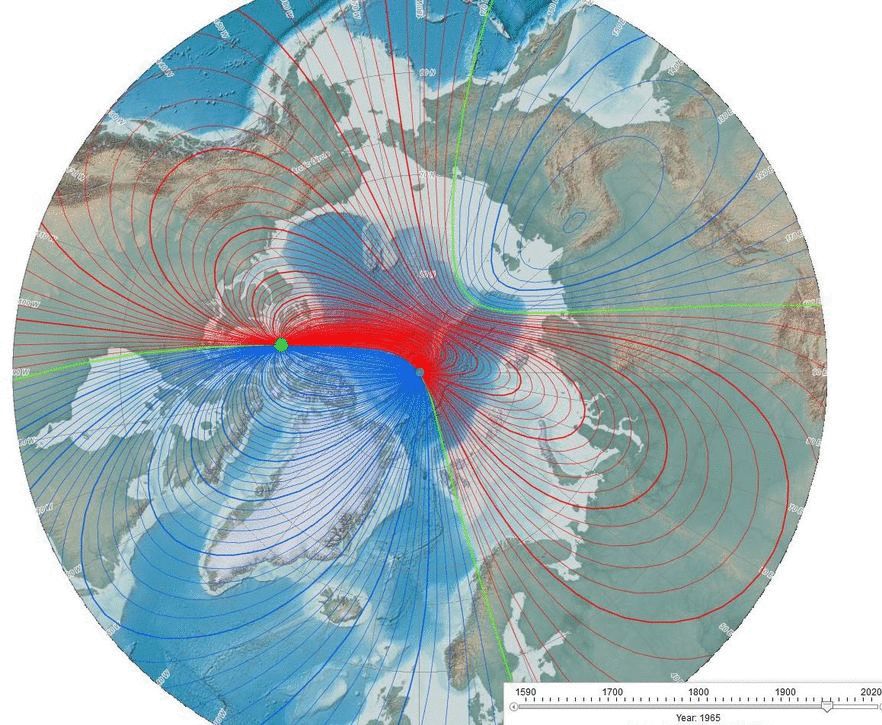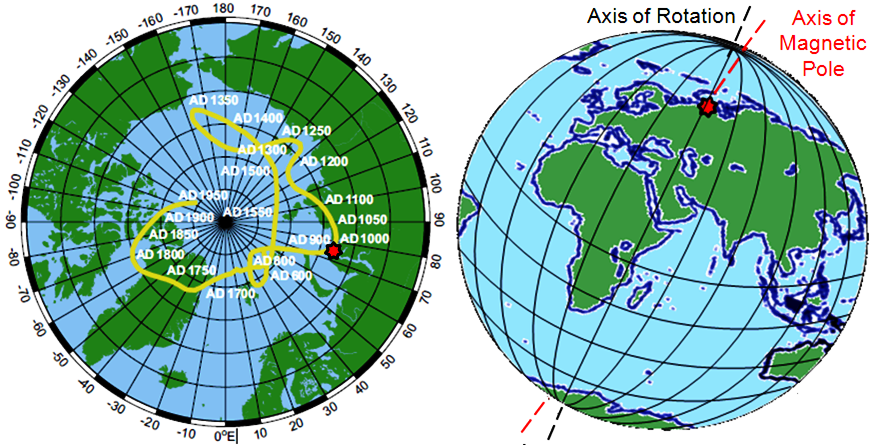Earth’s Pole Shift Fact, Fiction, and the Planet’s Mysterious Magnetic Dance

For centuries, the concept of Earth’s poles shifting has captivated scientists, doomsday theorists, and curious minds alike. From tales of ancient cataclysms to modern scientific debates, the idea of a pole shift raises profound questions about the stability of our planet’s orientation, climate, and magnetic field. But what exactly does a pole shift mean? Is it happening now? And should we be concerned?
This article explores the science behind Earth’s polar shifts, separating fact from fiction, and examining the mysterious mechanisms at play in our ever-changing planet.
Understanding Earth’s Poles: Magnetic vs. Geographic
To understand pole shifts, it’s essential to distinguish between geographic poles and magnetic poles:
- Geographic Poles: These are fixed points where Earth’s axis of rotation intersects the surface—true North and South.
- Magnetic Poles: These are the points where Earth’s magnetic field is vertical. They wander over time and are not aligned exactly with the geographic poles.
While Earth’s geographic poles remain relatively stable, magnetic poles are constantly in motion due to changes in the planet’s molten iron core.
Magnetic Pole Reversals: A Proven Phenomenon
The most scientifically supported type of pole shift is a magnetic pole reversal, where Earth’s magnetic north and south swap places.
Key facts about magnetic pole reversals:
- They occur irregularly in Earth’s history, roughly every 200,000 to 300,000 years.
- The last full reversal, known as the Brunhes–Matuyama reversal, occurred about 780,000 years ago.
- Reversals are not instantaneous; they unfold over thousands of years.
- During a reversal, the magnetic field weakens, possibly down to 10% of its normal strength, before rebuilding in the opposite orientation.
Evidence of past reversals is found in lava flows, ocean floor sediments, and iron-rich rocks, which preserve the direction of Earth’s magnetic field at the time of their formation.
Is Earth’s Magnetic Pole Moving Now?
Yes. Earth’s magnetic north pole is shifting rapidly—currently moving from Arctic Canada toward Siberia at a rate of over 50 kilometers per year, faster than at any time in recorded history.
However, this does not mean a reversal is imminent. Pole movement is part of a natural process driven by the fluid motions in Earth’s outer core.
What Happens During a Magnetic Reversal?
There is no evidence to suggest that magnetic reversals cause mass extinctions or planetary chaos. However, a weakening magnetic field could have consequences, such as:
- Increased radiation exposure from space and the sun
- Disruption to satellites and GPS systems
- Greater auroral activity at lower latitudes
The atmosphere and magnetosphere still provide significant protection, even during a weakened state.

Geographic Pole Shift: The Controversial Idea
Unlike magnetic pole reversals, the notion of a geographic pole shift—where Earth’s rotational axis dramatically reorients—is far more controversial and speculative.
Theories range from:
- True polar wander, where the entire solid Earth repositions relative to the rotational axis over millions of years
- Crustal displacement hypothesis, popularized by Charles Hapgood and fringe theorists, which suggests the Earth’s crust can suddenly shift over the mantle, causing cataclysmic consequences
- Claims of sudden pole shifts causing past global disasters like Atlantis’s destruction or ice age megafloods—largely unsupported by mainstream science
NASA, USGS, and geological experts consider rapid axis shifts highly unlikely, and there is no credible evidence that such an event has occurred in human history.
Pole Shifts and Climate Change: Is There a Link?
Some theorists attempt to link pole shifts to climate change, volcanic eruptions, and earthquakes. While Earth’s magnetic field does affect radiation shielding and space weather interactions, there is no scientific consensus connecting magnetic reversals to drastic environmental changes.
Climate change today is primarily driven by anthropogenic greenhouse gas emissions, not pole shifts.
Misconceptions and Doomsday Myths
Pole shift theories have been exploited by doomsday narratives, especially around:
- The 2012 Mayan calendar prophecy
- Alleged “Planet X” influence on Earth’s rotation
- Claims that a sudden pole shift could instantly flood continents or flip gravity
These ideas lack scientific backing and often misinterpret geological and astronomical data.
Scientific Monitoring and Future Outlook
The Earth’s magnetic field and poles are constantly monitored by international space missions and observatories. Projects like:
- ESA’s Swarm mission
- NASA’s Magnetospheric Multiscale Mission (MMS)
- The World Magnetic Model (WMM)
These tools help scientists track shifts, model future movements, and prepare for any technological vulnerabilities.
While another magnetic reversal is inevitable, it is likely thousands of years away and would not spell catastrophe, thanks to our growing understanding and preparedness.
Conclusion
The concept of a pole shift is rooted in both scientific fact and imaginative speculation. While magnetic pole reversals are real, natural phenomena that have occurred many times in Earth’s history, claims of sudden cataclysmic axis flips are unfounded in credible science.
Earth’s magnetic field remains a dynamic and mysterious force, but its behavior is far better understood today than in the past. Rather than fear, continued research, observation, and education are the keys to navigating whatever changes may come from this ancient and ongoing planetary dance.




